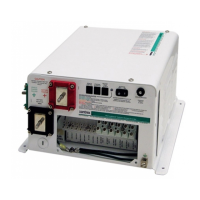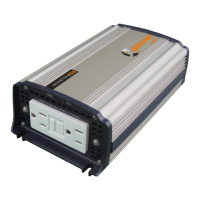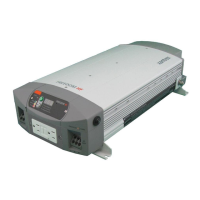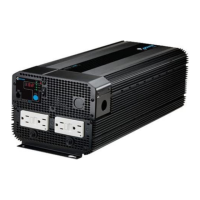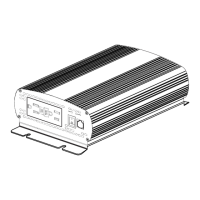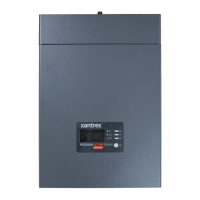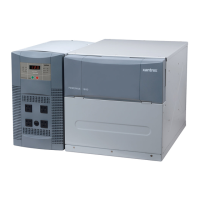Powering Loads
975-0209-01-01 3–3
When in the search sense mode, the green power LED will blink and the inverter
will make a ticking sound. At full output voltage, the green power LED will light
steadily and the inverter will make a steady humming sound. When the inverter is
used as an “uninterruptible” power supply the search sense mode function should
be defeated.
A neon-type nightlight can also be used as a good indicator to determine if the
inverter is in search sense mode. Simply plug the light into any AC outlet. When
the inverter is in the search sense mode the light will blink. If the inverter is
running a load, the light will be solid.
Exceptions Example A If Set Idle is set to detect a 40-watt load and a 30-watt incandescent
light is turned on, the inverter will detect the light. The light is a bigger load than
40 watts when its filaments are cold. When the light gets bright the filaments heat
up and the light becomes a 30-watt load. Since this is below the Set Idle setting of
40, the inverter will not detect it and the light will go out, beginning the process all
over again.
Example B If the Set Idle is set to detect a 30-watt load and a 40-watt
fluorescent light is turned on, the inverter will not detect the light. The light
presents a smaller load than 30 watts until the gas in the fluorescent tube ionizes.
Example C There are some appliances that draw power even though they are
turned off. TVs with instant-on circuits, microwave ovens with digital displays
and VCRs are examples. These loads present a dilemma. If the sensitivity is set
higher than the combination of these loads, then an auxiliary load must be used to
bring the inverter out of the search sense mode before the appliances can be turned
on. If the sensitivity is set lower than this combination of loads, the loads will be
left on and will put an additional drain on the batteries. (Three such 15-watt loads
would amount to an additional 90 amp hours per 24 hours in a 12 Vdc system.)
One solution is to turn these items off at the wall. Use an extension cord with a
rocker switch, a switch at the outlet, or the appropriate circuit breaker.
Powering Loads
Resistive Loads
These are the loads that the inverter finds the simplest and most efficient to drive.
Voltage and current are in phase, or, in this case, in step with one another.
Resistive loads usually generate heat in order to accomplish their tasks. Toasters,
coffee pots and incandescent lights are typical resistive loads. Larger resistive
loads—such as electric stoves and water heaters—are usually impractical to run
off an inverter. Even if the inverter could accommodate the load, the size of
battery bank required would be impractical.
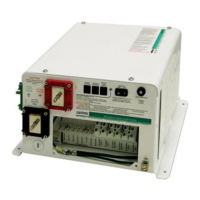
